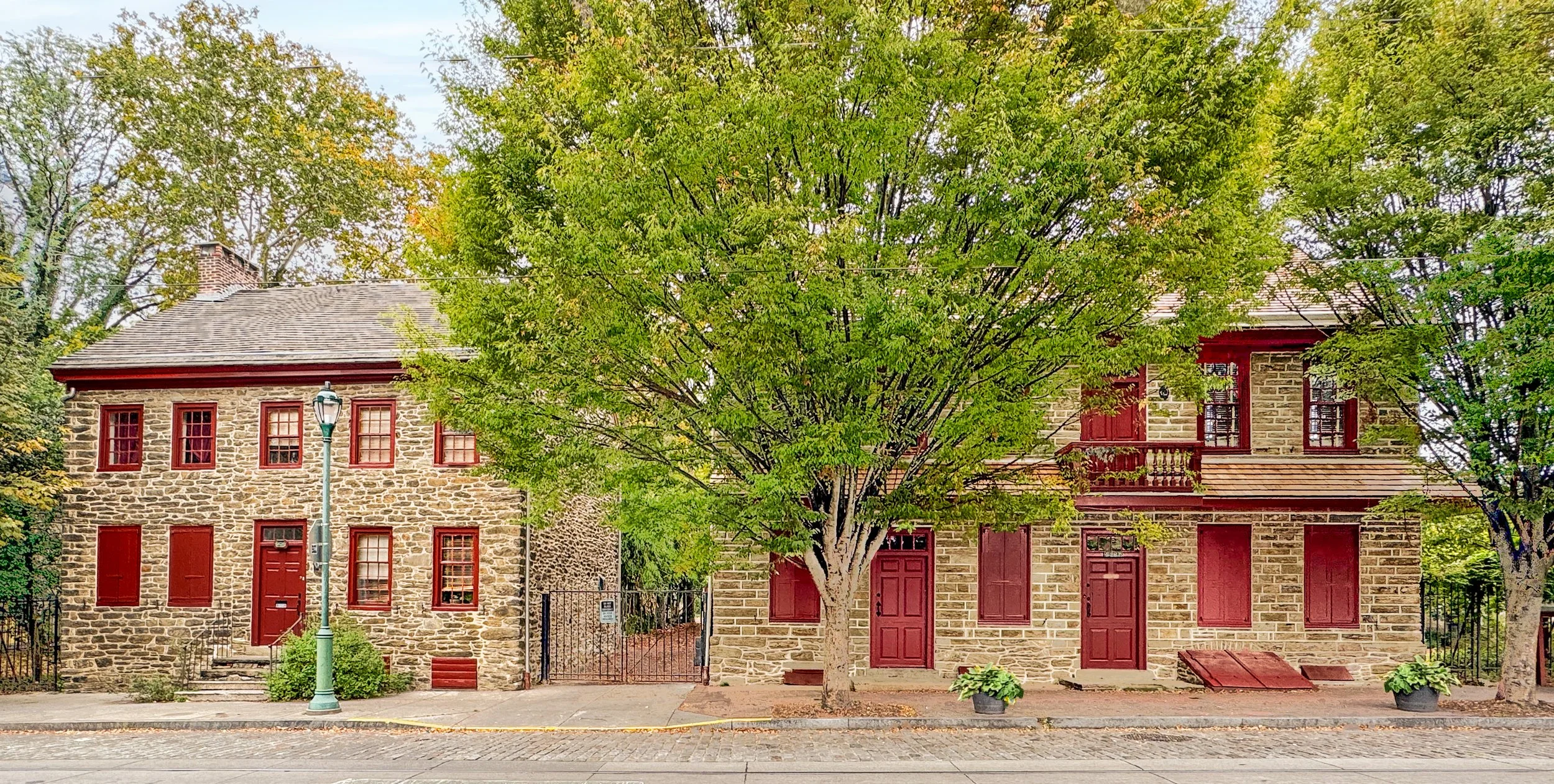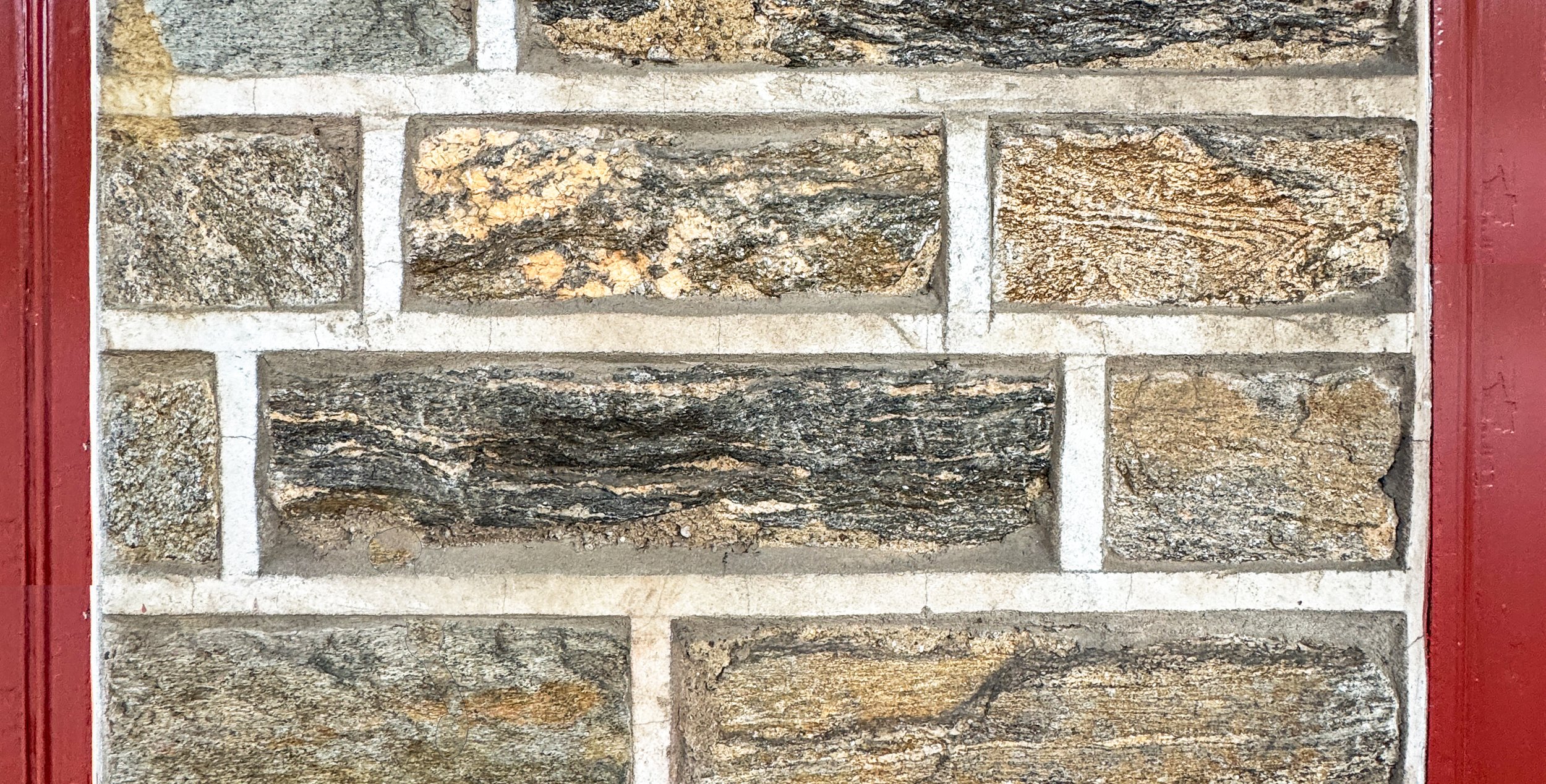Historic Quaker Houses of Philadelphia
Grumblethorpe
5267 Germantown Avenue in Germantown
Built in 1744 by John Wister
Above: The 1744 Grumblethorpe House (on right) and the Grumblethorpe Tenant House (on left). These landmark houses are beautiful examples of the Germanic vernacular architecture of Germantown. The building stone is local Wissahickon Schist. The interior timbers are hewn oak from Wister’s Woods.
John Wister (Johannes Wüster)
Quaker Patriarch of the Pennsylvania German Wister Family:
Johannes Wüster / John Wister immigrated to Philadelphia in 1727, from Hilsbach, near Heidelberg, Germany. When he was naturalized in 1740, the records listed him as a Quaker. Wister established a lucrative career as a merchant and real estate investor.
John Wister built Grumblethorpe as his summer residence in 1744. The family’s primary residence was at 325 Market Street, Philadelphia. Wister descendants lived here at Grumblethorpe for almost 200 years.
Above: Grumblethorpe illustration in the 1913 book Quaint Old Germantown by John Richards, 1913, drawn on zinc by J. Richards, Internet Archive
John Wister of Grumblethorpe
Philanthropist and Civic Leader:
The patriarch of Grumblethorpe, John Wister, was a generous philanthropist. He ordered bread to be baked every Saturday to be distributed to poor neighbors who came to his door for food. He was one of the original contributors to the Pennsylvania Hospital. He also was a co-founder of Philadelphia’s Fellowship Fire Company.
John Wister lived at Grumblethorpe with his second wife Anna Catharina Rübenkam, who was born in Wanfried, Germany. His first wife also had been a German immigrant, Salome Zimmerman of Lancaster County.
John Wister’s third wife, Anna Thoman, also lived here at Grumblethorpe. She immigrated from Switzerland, and became a celibate sister of the Ephrata Cloister, Lancaster County. At the Cloister she was known as Sister Anastasia. She was a talented fraktur artist, and created some of the Cloister’s finest manuscript art. They married in 1771 at Philadelphia’s German Reformed Church. Although John Wister married outside the Quaker faith, he was buried in the Friends burial ground on Arch Street in Philadelphia.
Salley Wister
The 16-Year-Old Maiden of Grumblethorpe
An Anti-War Quaker Family During the Revolutionary War:
Above: Image source: Sally Wister’s Journal, Editor: Albert Cook Myers, 1902, Internet Archive
Daniel Wister (1738–1805), eldest son of John Wister, was the second generation of the family to live at Grumblethorpe. He stayed within the Quaker tradition and married Lowry Jones in a Quaker ceremony. The Wisters were pacifists, and opposed all wars, including the Revolutionary War.
Their daughter, Sarah “Sally” Wister (1761 - 1804), placed the Wisters on the literary map with her Revolutionary War diary, which was published in 1902 as Sally Wister’s Journal. Sally’s journal offers a vivid glimpse into Quaker life during the Revolutionary War. Her journal records her thoughts and daily experiences while she and her family were staying with relatives in Montgomery County while the British occupied Philadelphia. Although the Wister family was neutral and pacifist during the war, Sally’s diaries reveal her sympathies for the American cause. Above: Image source: Sally Wister’s Journal,
Interior of Grumblethorpe in 1902
Illustrated in Sally Wister’s Journal:
Above: Image source: Sally Wister’s Journal, Editor: Albert Cook Myers, 1902, Internet Archive
House Description - National Register of Historic Places:
Above: Image source: National Register of Historic Places Nomination Form: Germantown
Grumblethorpe Floorplans
By the Historic American Buildings Survey:
Above: Grumblethorpe floorplans drawn by J. Norman Mansell and Charles Grossman for HABS, before the building’s restoration. Image source: Library of Congress.
Grumblethorpe
Drawings and Illustrations:
Above left: Postcard, undated. Image source: Historical Society of Pennsylvania
Above center: Book illustration photographed by Alfred Hand, ca. 1920. Image source: Library Company
Above right: Drawing photographed by Alfred Hand, ca. 1920. Image source: Library Company
This house was named Grumblethorpe by Charles Jones Wister (1782-1865), a grandson of the family patriarch John Wister. Charles Wister created the Grumblethorpe name after he inherited this property. He took the name from the 1811 novel Thinks I To Myself by English writer Edward Nares.
Wissahickon Schist
Philadelphia’s Signature Building Stone:
Above: Grumblethorpe’s finely cut Wissahickon schist on the house’s front facade: Image source: Lee J. Stoltzfus
Wissahickon schist is to Philly architecture what scrapple is to Philly foodways. Scrapple and schist are iconic vernacular staples of historic Philadelphia. The city rests firmly on bedrock of the Wissahickon Formation, named for the local Wissahickon Creek. Early settlers found this stone was readily available and easy to cut. The stone’s appearance is striking. Sparkling mica flakes give its surface a silvery sheen.
Many historic buildings throughout Germantown and northwest Philly showcase this distinctive building stone. Wissahickon schist contributes to the well-built architectural aesthetic of these historic neighborhoods.
Links:








